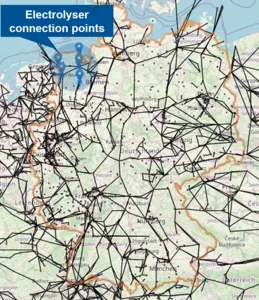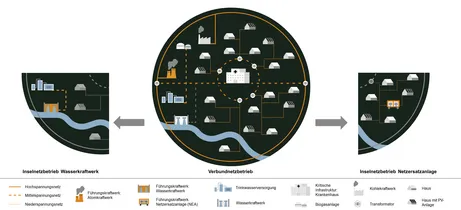Risk assessment of electrolyser failure: Analysis of grid faults and grid-serving behavior

Over the next decade, the installed capacity of electrolysers will increase from a few hundred megawatts to several gigawatts. In the current coalition agreement, the German government plans to increase the capacity of electrolysers up to 10 GW by 2030. Due to the existing gas infrastructure for hydrogen and the proximity of surplus wind power, the northern German grid is expected to experience an accumulation of grid connection requests. The uncoordinated loss of several gigawatts of electrolyser load due to a grid fault poses a high risk to dynamic stability. This study provides a qualitative risk assessment of the impact of an electrolyser loss and evaluates the advantages and disadvantages of different technical requirements for grid connection.
Download the executive summary here.
LINDA 2.0 - Local (partially) automated stand-alone grid and emergency supply with decentralized generation plants in the event of large-scale power outages

The consequences of a prolonged and widespread power outage can come close to a national disaster with serious consequences for civil society. The use of decentralized energy supply systems as an emergency supply for critical infrastructure by means of island grids can significantly reduce the damage in such scenarios. In the LINDA research project (Local island grid supply and accelerated grid restoration with decentralized generation plants), a concept for stable island grid operation in the event of an emergency supply was developed and tested under real conditions in a southern German grid area. In LINDA 2.0, the LINDA concept will be transferred to another test area and (partially) automated. The object of investigation is a constellation of a run-of-river power plant as an island grid-forming unit and drinking water supply as a critical infrastructure; several field tests are planned. In addition, a hybrid unit will be developed and tested in the distribution grid as part of the project. The hybrid genset is intended to be an alternative to a conventional standby genset and consists of an off-grid inverter with battery storage and a diesel generator as a range extender. During regular operation, the range extender is switched off and the genset operates completely emission-free (noise, exhaust gas and CO2).
Further information: Projektflyer